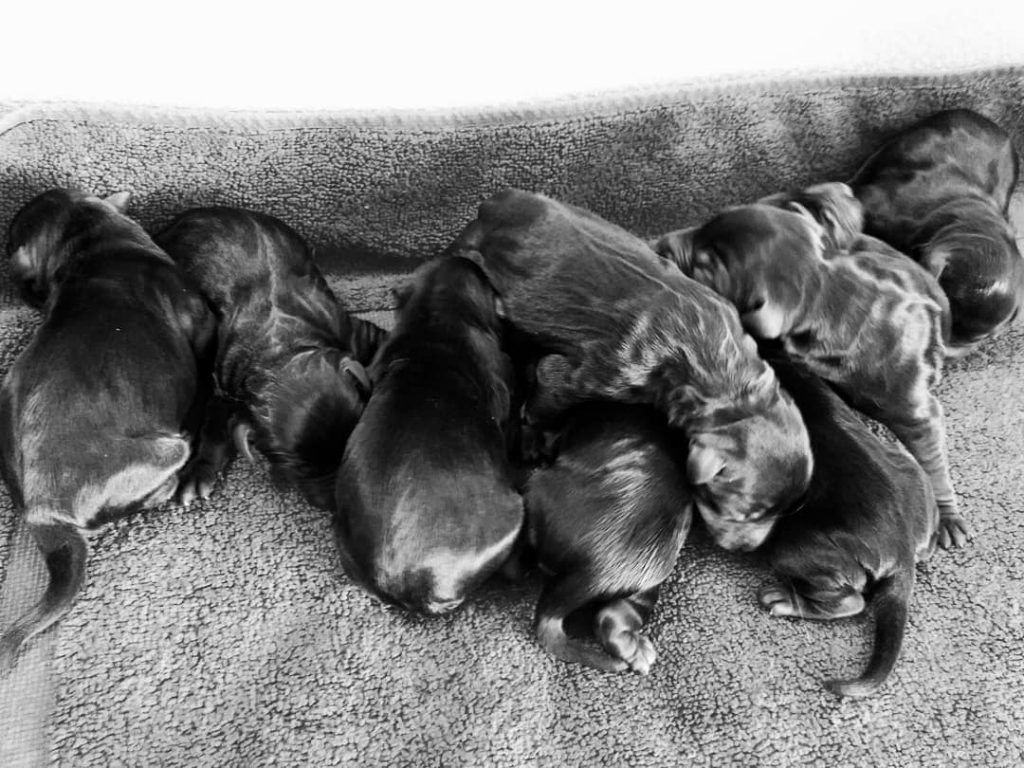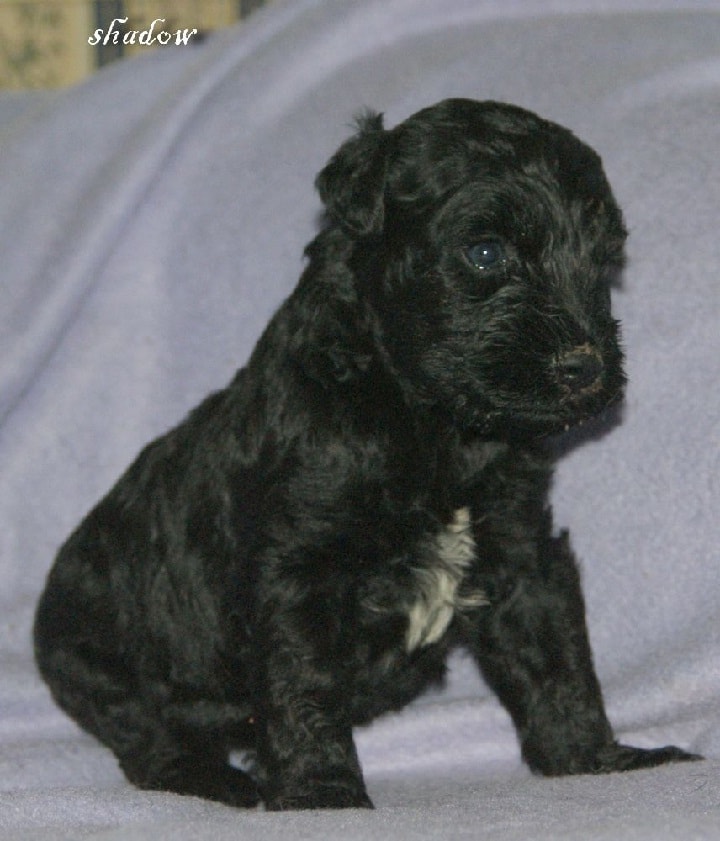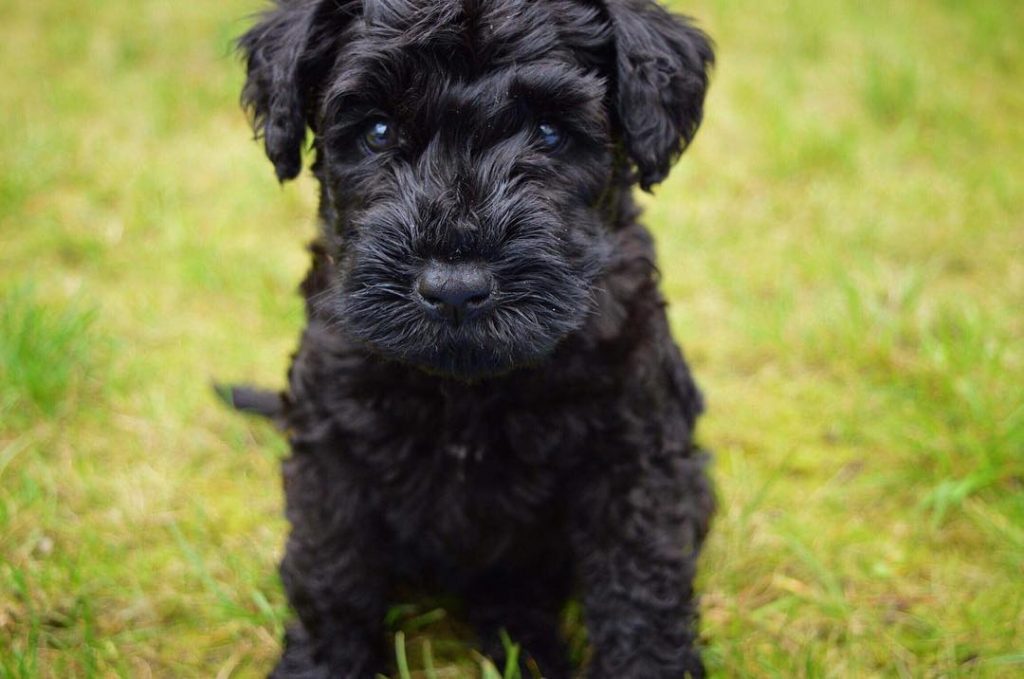Kerry Blue Terrier Puppies
Kerry Blue Terrier is a medium-sized muscular dog that is originated from Ireland. It is breed to control vermin, rats, otters, foxes, and rabbits.
The Kerry Blue Terrier give birth to 4-6 puppies at a time. The cost of a puppy is between $500-$600 on average. It is very important to know the development stages of your dog.
So, Kerry Blue Terrier’s development stages are explained below.
Stage 1: Newborn
Kerry Blue Terrier puppy is very tiny when they are born, just big enough to fit on the palm. Their eyes are not open and they cannot hear at all at the first 2 weeks of coming to the world. They are toothless and fully depends on the mother’s milk.
The mother cleans the body of Kerry Blue Terrier puppies by licking. At this stage, the puppies even are not able to urinate and defecate by themselves. So, by licking, the mother stimulates them to urinate and defecate.
Kerry Blue Terrier use their sense of touch and smell at this age to get to their mother. They pile up against their mother to keep themselves warm and cozy. If they are separated from their mother, they are sure to die of cold.

Image Source: [email protected]
Stage 2: Neonatal Stage (0-2 weeks)
Kerry Blue Terrier puppy’s neonatal stage starts right after the birth of the puppies. At this stage, they are fully dependent on mothers milk as their teeth are not developed yet. They cannot walk, hear and see so they use their whining to call their mother. The puppies need enough sleep which should be about 90 percent of the time for them to grow up.
They grow twice the size just after one week. As soon as they reach 2 weeks, they start to hear and their eyes start to open in 10-16 days.

Image Source: jelenadogshows.com
Stage 3: Transitional (2-4 weeks)
In the transitional stage, Kerry Blue Terrier is able to hear and see things around the surrounding. They start to learn the face of their mother an siblings and learn to recognize their voices. The coat begins to grow longer as they grow up and also it starts to change the color. They form their own vocabulary to communicate with their siblings and mother by yelping, whining, and barking.
Stage 4: Socialization (4-8 weeks)
After Kerry Blue Terrier puppy knows their mother and is fully familiar with its canine world, they should be introduced to the human. First, they should be introduced with the family members and as they reach the age of 6-8 weeks, they should be introduced with the outer human world.
They are very attached to their mother and siblings when they are in a transitional and socialization stage. Therefore, they should not be separated from them for more than 10-15 minutes as they face loneliness.

Image Source: Instagram-@kennelcyber
Stage 5: Juvenile (3-6 months)
The juvenile stage is a critical stage for Kerry Blue Terrier Puppies. They become very fearful of small things like loud sound, rough headlining. If this is not treated on time, they will grow up with fear inside them.
So, positive reinforcement and proper introduction to the outer world should be given. Treat the puppy gently and socialization with people and pets should be done carefully.
During this stage, Kerry Blue Terrier puppies teeth are in the process of developing. So, they tends to chew and bite anything they get even clothes, shoes. Therefore, they should be given puppy’s toy to chew and they should be trained out their chewing and biting habit gently.
Stage 6: Adolescent (6 months-1year)
After 6 months, Kerry Blue Terrier puppies are already in the final stage of puppy development. However, they are still young and growing both physically and mentally. They become more independent and stubborn between this age. They will try to show dominance over small children and family members. Therefore, proper training and developing firm leadership over them at this age is very important.
Visit Doglime for more information about puppies, dog breeds history, personality, training, and behavior.
Tags










